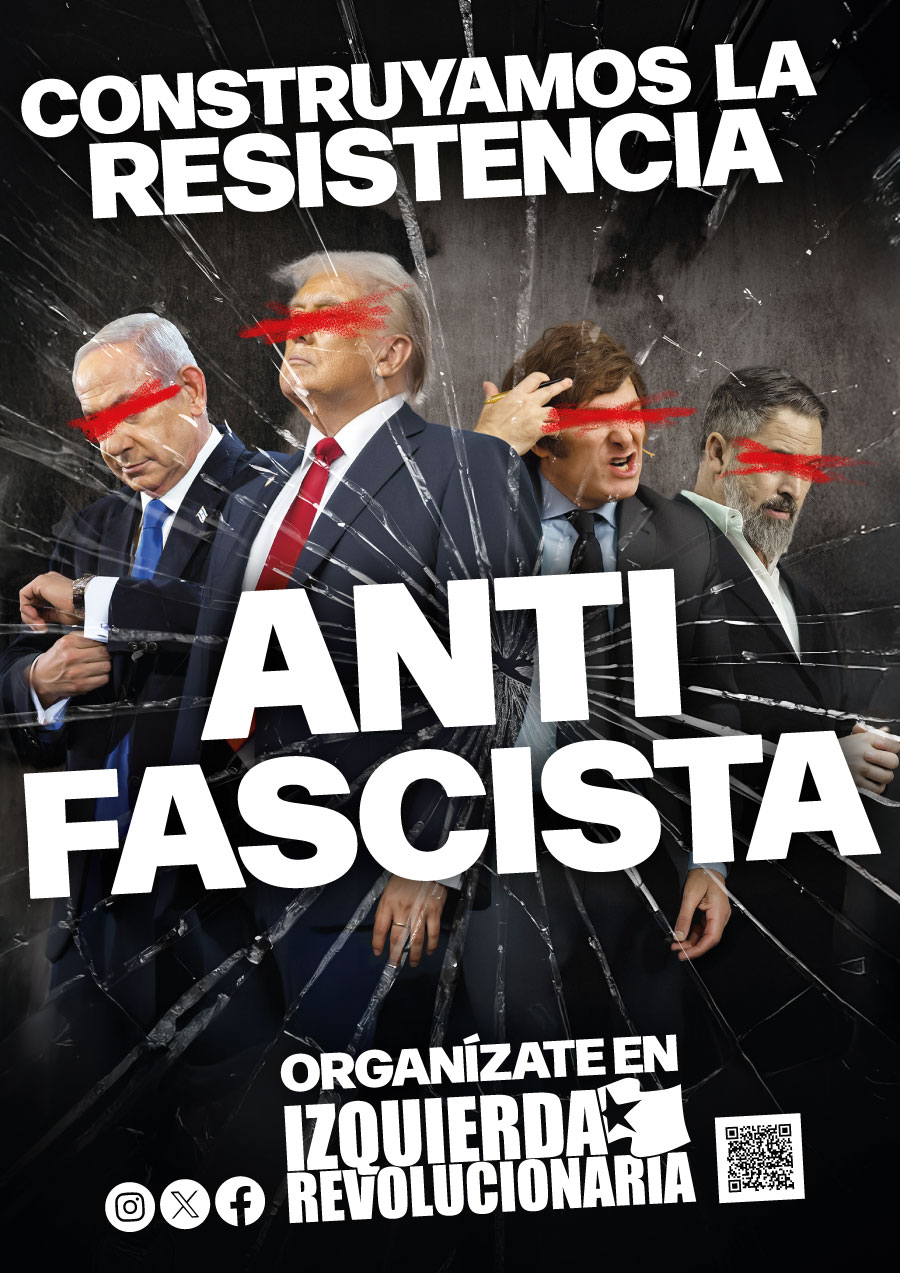In the same way as arms trafficking and prostitution, drug trafficking has become one of the most profitable businesses in the capitalist system. As authentic multinationals, cartels are investing astronomical sums in the productive process, ensuring distribution at an international scale and, of course, laundering their money using the same way as big companies: intricate webs of shell companies, offshore havens, banks...
In 2012 Brooklyn’s District Attorney’s office found that HSBC bank, one of the world’s biggest banks, moved 800 million euros provenient from the drug trade (narcotraffic), mostly coming from the Sinaloa cartel. Everything was solved in a friendly way: a 600 million euro fine and the freezing of assets valued on 1200 million euros, in exchange for no criminal charges being issue, lest the finance system be disrupted.
The big business behind weed legalisation
In some countries like Mexico, Colombia, or Italy, drug trafficking has been made so prevalent that its importance to the economy and complete blend with the state apparatus means that its disappearance is unfeasible under a capitalist system. Only in Mexico, the country with the biggest drug distribution in the world and the main producer of methamphetamines and cannabis, drug trafficking (narcotraffic) is estimated to make a gross profit of almost 30 000 million euros per year.
In Colombia, the world’s biggest cocaine producer- in 2017 it set a record for land dedicated to grow coca leaf, reaching 209 000 hectares, the same as four times the city of Madrid- the weight of drug trafficking might reach 3,8 % of the GDP.
From all drugs, cannabis is the most widely consumed. Although it has the status of a “soft drug”, some studies already indicate that one in every 5 cases of psychosis might be connected to its daily use, especially the specimens that have a high dose of the addictive component THC.
In the last few years the debate about the legalisation of marijuana, both for therapeutic and recreational use, has come back to the forefront, especially after the full legalisation approved in Canada and 9 US states.
The therapeutic use of cannabidiol (CBD), a component of cannabis, has been one of the pretexts used by big companies to take the leap towards growth and general sale once its use is legalised. Although Uruguay already legalised marijuana use in 2013, it was Canada who actually brought to the forefront the economic potential behind cannabis regulation. In a context of market’s recession and contraction, some analysts already call this business, colloquially known as “green gold”, the most important since the appearance of Amazon.
What interests lie behind the regulation debate?
Since its legalisation in 2018, the main companies in the cannabis sector, the majority of which are canadian, already have a combined value of 32 0000 million, which has shot up their stock value and garnered the interest of big pharmaceutical and food companies, mainly from the US. This market is valued at around 3600 million euros and could reach 10 000 million in 2025, just in Canada.
Amongst the multinationals that have entered the legal cannabis business is the owner of Corona beer, which has bought 38% of the biggest company in the field, Canopy Growth; Coca-Cola, which is said to be in negotiations with Aurora (a cannabis grower), to commercialise therapeutical drinks based on CBD; and tobacco companies such as Philip Morris. Although some associations talk about a responsible regulation under the supervision of the State, the big tobacco and pharmaceutical industries are already preparing to what they foresee as a very profitable business, as shown by what is happening in Canada.
The lack of qualms or regret shown by the big pharmaceutical companies to make money off and without any regard for our health is a well-known fact. It’s enough just to remember the scandal of the implants which was uncovered by a reporting investigative team, which implicated the prosthesis and implants industries and made clear the complete lack of control and supervision over them, causing severe health damages in a big number of people, such as is the case of the permanent contraception device Essure.
The European Parliament approved a resolution, on the 13th of February, asking for more funding and research for the therapeutic use of cannabis, as well as a juridical definition for its medicinal use. Currently, many of the Eurozone countries already allow the medicinal use of the plant, although with various restriction levels. Recently, it was announced in Germany (where the therapeutic use is legal since 2017), that in the next few months the list of authorised purveyors for the sale of cannabis would be made public, opening a path for private companies to enter a very fruitful market for the pockets of capitalists.
The Spanish state is, due to its weather conditions, a paradise for the big companies, where 20 000 hectares were already greenlit for cannabis farming and where some of the biggest companies have already made camp. On April of 2018, the british private equity fund GHO Capital paid 200 million euros to acquire the Alcaliber laboratories, owned by Juan Abelló, one of the richest people in the Spanish State.
At the same time, Abellós investment company, Torreal, together with GHO Capital, created another fund to promote the growth of cannabis in the Spanish State, thanks to the 2016 license given by Spanish Agency of Medicines and Medical Products. In 2017, a year after obtaining its license, Abelló’s firm reached an agreement with Canopy Growth to grow its seeds in the Spanish State. Another company which has come to Spain is the stock exchange trading Freedom Leaf, with its headquarters in Las Vegas (US), which in May of this year has bought a 40 000 square meter greenhouse in Valencia for the value of 4.2 million euros.
The fake “progressive character” of legalisation
In 2018, cannabis use in Spain has increased by 12% amongst 15-17 year olds, according to a report by the General Council of Social Work. Some of the reasons given by young people to start using cannabis were “the evasion from reality”, “ to isolate themselves from day-to-day frustrations” and “regulating their emotions”. And this is precisely the only role of drug use, to atomize the youth and to disarm the social struggle.
Behind the arguments which try to pose legalisation as something progressive and left-wing- as Podemos does- lies a very different reality. And that reality is that in a context of the worst economic crisis in history, with almost 50%of youth unemployment in Spain, where many working-class families live in precarious and extreme situations, to make easier and to normalise drug use is to throw the youth under the bus, the same youth who has toppled the franquist “reválidas”* and that has filled the streets in the feminist struggle and the struggle against climate change.
The purple formation has argued for the full legalisation of cannabis, although as a State regulated process, due to the fiscal opportunities it would offer. According to them, “a state-owned cannabis production industry would generate huge profits for the state, which would result in a better public health for the world”. But this is both to overlook their destructive role in society, and at the same time a completely utopian idea: it is impossible to think that the big companies will just submit to the letter of the law and won’t use every tool in their toolbox to avoid paying taxes.
The impact of crack cocaine and heroin in the 70’s and 80’s is dwarfed by the impact of drugs in the current context of degeneration of the capitalist system. According to United Nations Office on Drugs and Crime (UNODC), 2018 has set a record in the production of cocaine and opioids. It also sends an alert about opioids (prescription and non-prescription drugs that have an effect similar to opium or morphine). 63 000 people have died in the United States due to opioid overdose- just during the year 2017- which is more than the number of US soldiers who died in the Vietnam war. It is an authentic public health catastrophe.
A similar example to the social plague that drug constitutes, especially during a context of economic crisis like the one we are living through, is gambling (in sports and games): in only five years the number of active punters as increased by 300%, with an average age of 21 and with an alarming increase of gambling addiction.
Capitalism poisons us
But it is not the first time that drugs are used as a weapon against the combative youth.
This is shown by the heroin epidemic which affected thousands of young people in the ‘80s, something that is etched in the memory of working class families. In 1991, a staggering amount of 1530 people died due to drug overdose. In an epoch of struggle as the Transition**, when the dictatorship fell due to the pressure, organisation and mobilisation of the masses and the state apparatus endeavoured to consolidate what is now known as the ‘78 regime**, with the complicity of PSOE (the Spanish Socialist Workers’ Party) and PCE (Spanish Communist Party), drugs played a key role addicting thousands of youth and with it disarming their will to struggle.
With the complicity of the police, or with its direct involvement in drug trafficking, as in the case of the Intxaurrondo (Gipuzkoa) barracks, heroin was used as a political weapon to punish and break the youth in struggle. Three news pieces from the same year, 1984, taken from El País, show the extent of this dirty war. Whilst in Burgos (a city with a low number of working-class and industries), the percentage of drug addicts was 3,9%, in the coal-mining areas of Asturias, with deep working class fighting traditions, it reached 30%. Even more shocking, the city with the biggest proportion of drug addicts- even bigger than London or New York- was San Sebastian***, which only had 184 000 inhabitants.
Due to all this, and because we have a memory, those of us in Izquierda Revolucionaria are against the use and legalisation of drugs. It is not, as they try to sell us, an individual decision, but a collective and class issue. Meaning, the role that drug use plays in society, who it benefits and who it damages.
Under this system, the same that kills the planet, and sentences thousands of young people to a precarious life and work, where oftentimes to smoke a spliff is a way of escaping, to endure the pressure to which we are all subjected, drug use becomes the perfect weapon to atomize the most combative sectors, to stop them from thinking and struggling. We need to understand the political role that drugs play and the need to organize to fight back, so we can end this obsolete system that poisons us and condemns us to barbary.
*reválidas were end of secondary exams, introduced during francoism, which were decisive in deciding if students could progress to university- these exams were clearly classist, as for the most, only students with the means for additional tuition and practice were able to get good grades on them, and to fail them meant that working-class youth would be banned from attending university.
** Transition was the period during the fall of the francoist dictatorship, pushed by the mass struggle of spanish workers in a context of economic crisis, when the bourgeoisie and reformist parties, PSOE and PCE, articulated to stave off a political revolution, coordinating a transition which left in place most of the francoist repressive apparatus of the state and many laws from the dictatorship- the regime of ‘78.
*** One of the main cities in the Vasque Country, with had a very left fighting tradition under the organization of the Abertzale Left (left radical vasque nationalist). One of the most vanguard regions in Spain in the fight against the Franco Dictatorship and against the agrements of the 78 Regime was the Vasque Country.





















































